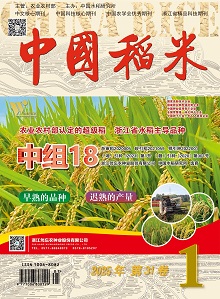The state has clearly pointed out that in the work of ensuring food security, the main production areas, main sales areas, and production-sales balance areas should share responsibilities together, which means “holding the bowl together and sharing the responsibility together.” As a typical grain-consuming province, Zhejiang’s in-depth analysis of the characteristics of grain production and exploration of the bottlenecks in capacity enhancement, followed by the proposal of practical strategies for increasing grain production capacity, is of great significance for ensuring national food security. The research reveals that Zhejiang faces challenges and bottlenecks in improving grain production capacity from various aspects, including the main bodies of grain production, cultivated land resources, and technology. The population carrying capacity of cultivated land resources in the province has been under continuous pressure, and since 2012, it has entered the overloaded population zone. Compared with the national scope, Zhejiang’s grain production only has a comparative advantage in production efficiency. Within the province, Pinghu, Xuzhou, and Nanxun have demonstrated certain comprehensive advantages in grain production capacity. In terms of grain crop, Zhejiang’s rice and soybean production have certain comprehensive comparative advantages, but the advantage of soybeans is not stable. To effectively respond to these challenges and increase grain production capacity, precise policies should be implemented from various aspects, such as strengthening the team of grain producers, adapting to local conditions, and ensuring that the new round of the billion-ton grain production capacity enhancement action is implemented on the ground and achieves practical results.

